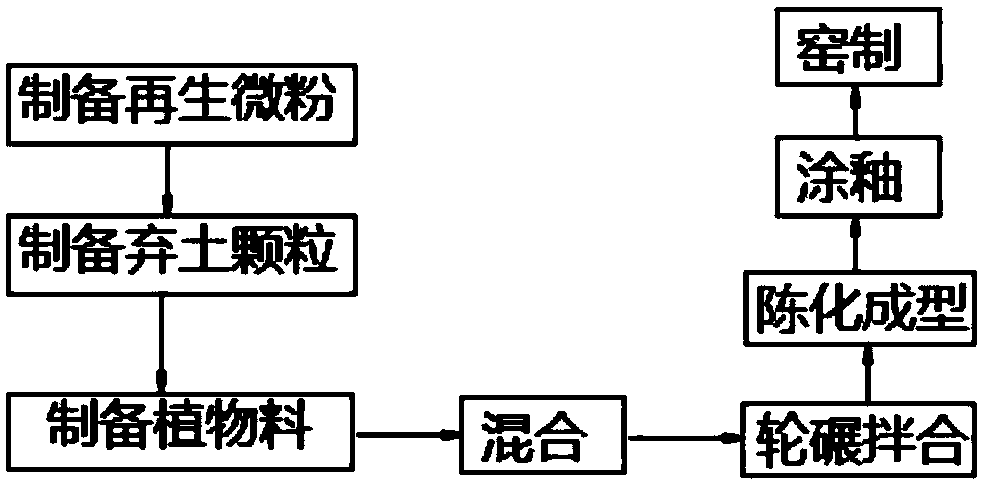Manufacturing process for recycled aggregate art tile
A technology of recycled aggregate and manufacturing process, applied in the field of construction, can solve the problems of waste of manpower and material resources in the maintenance of discharge sites, slow progress of regeneration and utilization, and the impact of vegetation and groundwater, and achieves excellent insect-proof, anti-corrosion and moisture-proof ability, rich surface texture effects, and beautification. The effect of living environment
- Summary
- Abstract
- Description
- Claims
- Application Information
AI Technical Summary
Benefits of technology
Problems solved by technology
Method used
Image
Examples
Embodiment Construction
[0023] The following will clearly and completely describe the technical solutions in the embodiments of the present invention with reference to the accompanying drawings in the embodiments of the present invention. Obviously, the described embodiments are only some, not all, embodiments of the present invention. Based on the embodiments of the present invention, all other embodiments obtained by persons of ordinary skill in the art without making creative efforts belong to the protection scope of the present invention.
[0024] see figure 1 , the present invention provides a kind of manufacturing process of recycled aggregate art brick, comprising the following steps:
[0025] 1) Preparation of recycled micropowder: Recycle the demolished construction waste on the surface, remove impurities, and separate the spoil, bricks and concrete blocks in the construction waste; crush and sieve the bricks and concrete blocks to obtain a particle size of less than 1.5mm The regenerated f...
PUM
 Login to View More
Login to View More Abstract
Description
Claims
Application Information
 Login to View More
Login to View More - R&D
- Intellectual Property
- Life Sciences
- Materials
- Tech Scout
- Unparalleled Data Quality
- Higher Quality Content
- 60% Fewer Hallucinations
Browse by: Latest US Patents, China's latest patents, Technical Efficacy Thesaurus, Application Domain, Technology Topic, Popular Technical Reports.
© 2025 PatSnap. All rights reserved.Legal|Privacy policy|Modern Slavery Act Transparency Statement|Sitemap|About US| Contact US: help@patsnap.com

